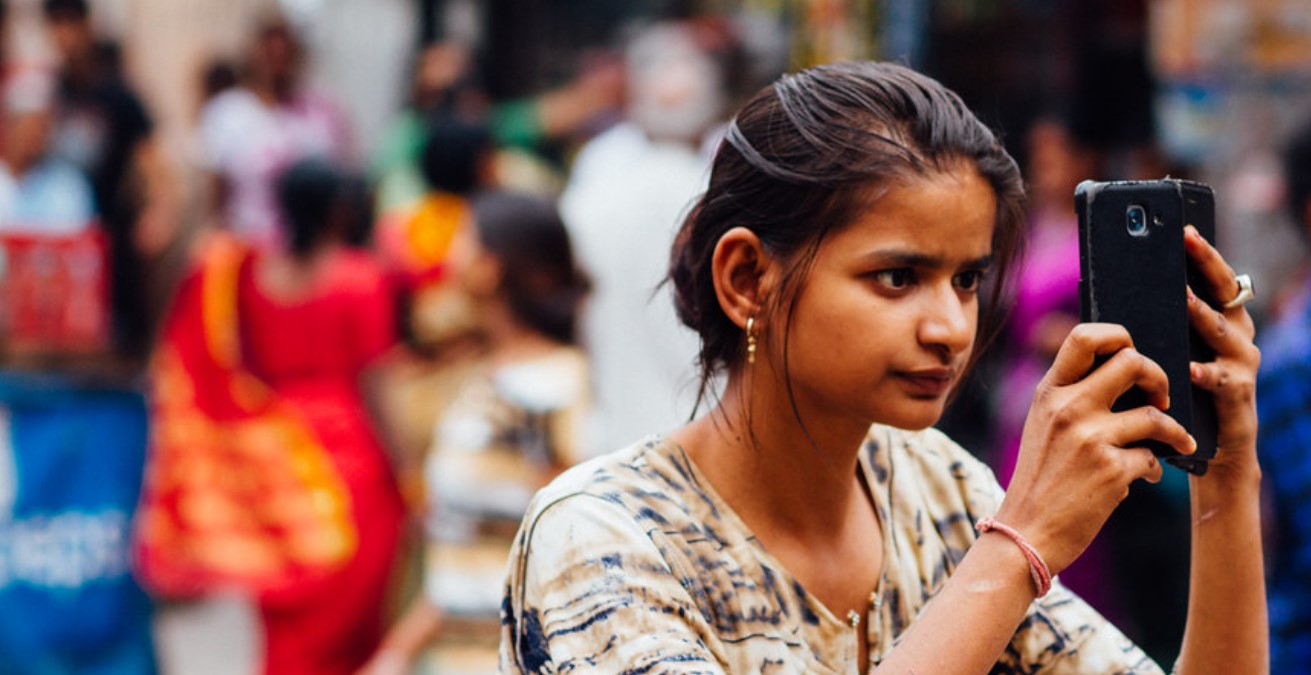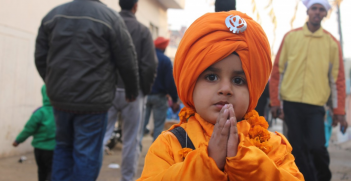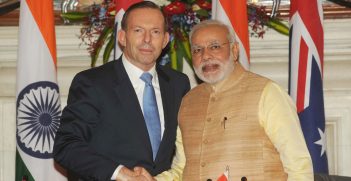On Protests And Internet Suspension in Assam - A Look at India’s Digital Tactics in Suppressing Dissent

The current protests in India against the Citizenship (Amendment) Act, 2019 have been met with internet suspensions imposed by the Indian government to suppress them. The article focuses on the case in the Indian state of Assam rather than pan-India.
People who grew up during the 1990s in Assam identify themselves as a special generation. It was the decade of militancy and Assam, along with neighbouring states in the northeast region of India, was a highly militarised conflict zone. It was also the time the country was witnessing the perks of the neo-liberal policies, adopted by the Indian state in 1991, including the internet. But, in case of Assam and the rest of the northeast region, such perks came much later – during the last few years of the decade. The 1990s were marked by a spate of violence, increased military presence, and numerous bandhs (mass strikes), curfews, and black-outs. I grew up during the 90s and what I witnessed in Guwahati in December 2019 threw me back into these regressive annals of history.
Assam has been caught in the midst of unprecedented protests since the first week of December 2019, and what I have experienced in Guwahati, my home-city, is something I have never seen in my life as its resident.
Guwahati, along with the rest of Assam, a state in India’s frontier zone, the Northeast, has been robustly protesting the Citizenship (Amendment) Act, 2019, popularly referred to as the CAA (as a bill, it was known as the Citizenship Amendment Bill). The CAA is essentially an amendment in the already existing Indian Citizenship Act 1955. The amended law was notified on 12 January, which means it can now be enforced by the Indian state.
The CAA was introduced by the Hindu nationalist Bharatiya Janata Party (BJP) and it intends to expedite the process of granting citizenship to the religious minorities of Bangladesh, Pakistan and Afghanistan in India on or before December 31, 2014. These minority groups that the BJP listed out are Hindus, Christians, Sikhs, Buddhists, Parsis, and Jains from these three neighbouring countries. It does not talk about Muslims. The BJP propagated the CAA as a law that ensures dignity and citizenship to these persecuted religious minorities from largely Islamic nations. The CAA does not explicitly mention anything about “persecuted community” but refers to an amendment in the year 2015 in the Indian Passport Act, 1920, which mentions privileges to be offered to “communities that were compelled to seek shelter in India due to religious persecution or fearing religious persecution on or before the 31 December 2014.”
It is glaring that Muslim minorities such as the Ahmadiyyas or even atheists are missing from the ambit of the CAA, despite there being ample evidence to suggest their persecution in Muslim majority nations including Pakistan, Bangladesh and Afghanistan. The new law has triggered protests across India with masses pointing out how it affects the secular fabric of the country. They argue it violates the Indian Constitution which clearly states that persons of all religion, caste, gender, and ethnicity will be considered equal before the law. They also fear its lethal combination with another pet project of the BJP – a nationwide exercise to verify citizenship of masses based on documents. This proposed exercise, in the words of the top ministers in the government, has been termed as the pan-India National Register of Citizens (NRC).
The protests first started from Assam, where resentment towards the CAA draws substance from the common opinion that it not only it violates the Indian Constitution, but also that it violates the Assam Accord of 1985 which was signed between the Indian government, the All Assam Students Union (AASU) and the All Assam Gana Sangram Parishad (AAGSP). This was the culmination of a six-year-long mass movement against illegal immigrants in Assam.
Assam has been subjected to forceful migration of peasants and other workers from East Bengal since colonial times and this migration has altered the demography of this small state. The ethnic and indigenous communities of Assam and other states of the Northeast have had a historical struggle against this unchecked immigration, which has threatened the linguistic and cultural identities of these communities.
As Assam exploded in protest and rage, the BJP-led government in the state clamped down heavily on those dissenting against the CAA. Curfews and internet bans were imposed in Guwahati on the evening of 11 December 2019. The curfew was later extended to many parts of Assam and the internet ban extended to the whole of Assam 24 hours later. The curfew in Guwahati was lifted for a few hours in the morning after two days of imposition, which led to massive inconveniences for all residents of the city. Flag marches by the Indian army were carried out in the streets of Guwahati for two continuous days. In the meantime, the police and security forces tried using an iron hand to break up the protests leading to deaths, mass detentions, and arrests all across Assam. These numbers increased by the end of December. But the internet ban was lifted only after ten days of being imposed in Guwahati and at least nine days in other parts of Assam.
Given this background, what this article shall try and address is the reasons and effects of the internet ban in Assam during December 2019.
The internet suspension in Assam is not an exemption in India in current times. The official reason for the government to suspend internet services was to “prevent misuse of social media in disturbing peace and tranquility, and maintaining law and order.”
The Software Freedom Law Center, India (SFLC.in) is a legal services organisation in India committed to protection of internet freedom and open source network. It reports that there have been 106 such internet shutdowns in the whole of the country in 2019, out of the total 381 shutdowns since 2012. A news report in The Mint, titled “India is the Internet Shutdown Capital of the World,” says that most of the internet subscribers in India are mobile internet users rather than broadband users. The report cites the SFLC.in which says that there are 446 million internet subscribers in India out of which 424 million are mobile internet users.
When we look at the number of internet users in Assam and the rest of the Northeast region, government data clearly says that internet penetration is still quite low in this part of India. A Times of India report states that the number of internet users of Assam is 10.25 million in 2018, whereas the number in the rest of the seven states of the Northeast, the number is 6.09 million. Even if the numbers stand low compared to the rest of India, internet suspension brought much woes to the citizens of Assam.
Prime Minister of India Narendra Modi has been relentlessly pushing forward his “Digital India” vision for the last few years. This vision encompasses a cashless and digital economy which has seen the rise in cashless transaction services such as PayTM and surge in credit and debit card usage. However, when the internet was clamped down in Assam along with the curfew, people were prevented from even accessing basic amenities. Along with swipe card machines being non-functional, most of the ATMs in the city had run out of cash. Radio taxi operators such as Ola and Uber, and cloud kitchen service providers were among the ones who were heavily hit by this internet ban. News websites reported that around 12000 Assamese youth were pushed to a dire situation due to this internet ban, where many were left without any money to buy even food. Students as well as persons with disabilities were another group of people to have suffered under this ban.
A recent study has pointed that India had over 4196 hours of internet suspension in 2019 and the country has lost over $1.3 billion in economic terms. The only two countries worse affected than India are Iraq and Sudan. The study also says that India imposes more internet restrictions than any other country.
Given the fallout of such restrictions and bans, it is important to note, that this has not deterred the Indian state from implementing them.
Srinivas Kodali, an independent researcher on data, internet, and governance in India, traces such internet suspensions to the colonial legacy of the Indian subcontinent:
“Just as the British used Section 144 of the Indian Penal Code to clamp down on the Indian freedom movement, to curb any protest, the current Indian state is doing the same on any dissent through internet suspensions,”
“Curbing of the internet is basically the government curbing communication. This is how the colonialists contained protests by curbing communication, and this is what we see is happening even today. No government wants dissent. This process of internet suspension started in Kashmir, and now the government has replicated it in other parts of India.”
Such internet bans infringe upon the rights of freedom of expression as laid out in Article 19 of the Indian Constitution and as directed by the Supreme Court of India in a recent judgement. These suspensions and bans also become a potent tool of oppression in the hands of the Indian state. My own subjective experience in December in Assam, and the experience of my fellow Assamese, proves that law and order becomes only a ruse and sufferings of the people do not matter to an authoritarian government. Such tactics and oppression leads one to seriously question the health of a democracy, the one that India claims it is.
Shaheen Ahmed is a PhD candidate in cultural studies at Monash University, Melbourne.
This article is published under a Creative Commons Licence and may be republished with attribution.





